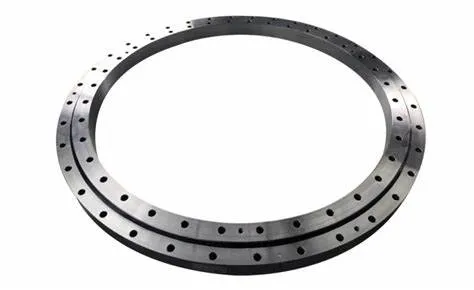-
Cangzhou Yulong Steel Co., Ltd.
-
Phone:
+86 13303177267 -
Email:
admin@ylsteelfittings.com
- English
- Arabic
- Italian
- Spanish
- Portuguese
- German
- kazakh
- Persian
- Greek
- French
- Russian
- Polish
- Thai
- Indonesian
- Vietnamese
- Zulu
- Korean
- Uzbek
- Hindi
- Serbian
- Malay
- Ukrainian
- Gujarati
- Haitian Creole
- hausa
- hawaiian
- Hebrew
- Miao
- Hungarian
- Icelandic
- igbo
- irish
- Japanese
- Javanese
- Kannada
- Khmer
- Rwandese
- Afrikaans
- Albanian
- Amharic
- Armenian
- Azerbaijani
- Basque
- Belarusian
- Bengali
- Bosnian
- Bulgarian
- Catalan
- Cebuano
- China
- China (Taiwan)
- Corsican
- Croatian
- Czech
- Danish
- Esperanto
- Estonian
- Finnish
- Frisian
- Galician
- Georgian
- Kurdish
- Kyrgyz
- Lao
- Latin
- Latvian
- Lithuanian
- Luxembourgish
- Macedonian
- Malgashi
- Malayalam
- Maltese
- Maori
- Marathi
- Mongolian
- Myanmar
- Nepali
- Norwegian
- Norwegian
- Occitan
- Pashto
- Dutch
- Punjabi
- Romanian
- Samoan
- Scottish Gaelic
- Sesotho
- Shona
- Sindhi
- Sinhala
- Slovak
- Slovenian
- Somali
- Sundanese
- Swahili
- Swedish
- Tagalog
- Tajik
- Tamil
- Tatar
- Telugu
- Turkish
- Turkmen
- Urdu
- Uighur
- Welsh
- Bantu
- Yiddish
- Yoruba

oct. . 11, 2024 16:24 Back to list
Bending Techniques for Round Steel Tubing Applications and Best Practices
Bending Round Steel Tubing An Essential Process in Metal Fabrication
Bending round steel tubing is a vital process in the metal fabrication industry, enabling manufacturers to create complex structures and components used in a variety of applications. This operation involves shaping steel tubes into curved forms without compromising their integrity or structural strength. Understanding the techniques, tools, and considerations involved in bending round steel tubing is crucial for engineers and fabricators alike.
The Importance of Round Steel Tubing
Round steel tubing is preferred in many designs for its versatility and strength-to-weight ratio. Its circular cross-section provides uniform strength in all directions, making it ideal for structural applications, including frameworks, railings, and supports. Additionally, round steel tubes are used in automotive applications, furniture design, and even in the construction of intricate artistic installations. The ability to bend these tubes while maintaining their properties is essential for creating functional and aesthetically pleasing designs.
Bending Techniques
There are several methods for bending round steel tubing, each with its advantages and suitable applications
1. Mandrel Bending This technique involves placing a mandrel inside the tube, which supports the wall during the bending process. Mandrel bending helps maintain the tube's cross-sectional shape and prevents wrinkling or collapsing, making it ideal for tight bends and complex shapes.
2. Non-Mandrel Bending This method does not use a mandrel and is suitable for less critical applications where the risk of distortion is lower. Non-mandrel bending may result in some ovality, but it is a cost-effective solution for larger radius bends or in applications where aesthetics are less critical.
3. Rotary Draw Bending This widely used method employs a bending machine that rotates the tube around a fixed bend die. It offers precise control over the angle and radius of the bend, making it preferred for applications that require high accuracy and repeatability.
4. Heat Bending In some cases, applying heat to the metal before bending can facilitate the process. Heating the tubing allows it to be formed more easily, reducing the risk of cracking, especially in thicker wall sections. This method is most commonly used in the fabrication of artistic and unique structures.
bending round steel tubing

Tools and Equipment
The process of bending round steel tubing requires specialized tools and equipment. Bending machines, such as hydraulic benders and rotary benders, are essential for achieving the desired shapes and angles. Additionally, tube lasers and CNC (Computer Numerical Control) machines can be used to ensure precision cutting and bending, especially in large-scale production runs.
Considerations in the Bending Process
When bending round steel tubing, several factors must be considered to achieve optimal results
- Material Specifications Different grades of steel have various properties, including tensile strength and ductility. Understanding these characteristics is crucial for selecting the appropriate bending technique.
- Wall Thickness Thicker walls may require different bending methods or settings to prevent deformation. The thickness of the tubing can significantly affect the bend radius and the final shape.
- Bend Radius The radius of the bend impacts the overall design and structural integrity. A tighter bend may lead to more significant material stress, while a larger radius can result in a smoother transition.
- Post-Bending Treatments After bending, treatments such as welding, painting, or galvanizing may be necessary to enhance corrosion resistance or final aesthetics.
Conclusion
Bending round steel tubing is an intricate process that requires knowledge, precision, and the right tools. By mastering the various techniques and understanding the necessary considerations, manufacturers can create high-quality components that meet the demands of diverse industries. As the need for innovative designs and structural efficiency continues to grow, so too does the importance of proficient bending practices in metal fabrication.
Latest news
-
ANSI 150P SS304 SO FLANGE
NewsFeb.14,2025
-
ASTM A333GR6 STEEL PIPE
NewsJan.20,2025
-
ANSI B16.5 WELDING NECK FLANGE
NewsJan.15,2026
-
ANSI B16.5 SLIP-ON FLANGE
NewsApr.19,2024
-
SABS 1123 FLANGE
NewsJan.15,2025
-
DIN86044 PLATE FLANGE
NewsApr.19,2024
-
DIN2527 BLIND FLANGE
NewsApr.12,2024
-
JIS B2311 Butt-Welding Fittings LR/SR 45°/90° /180°Seamless/Weld
NewsApr.23,2024











